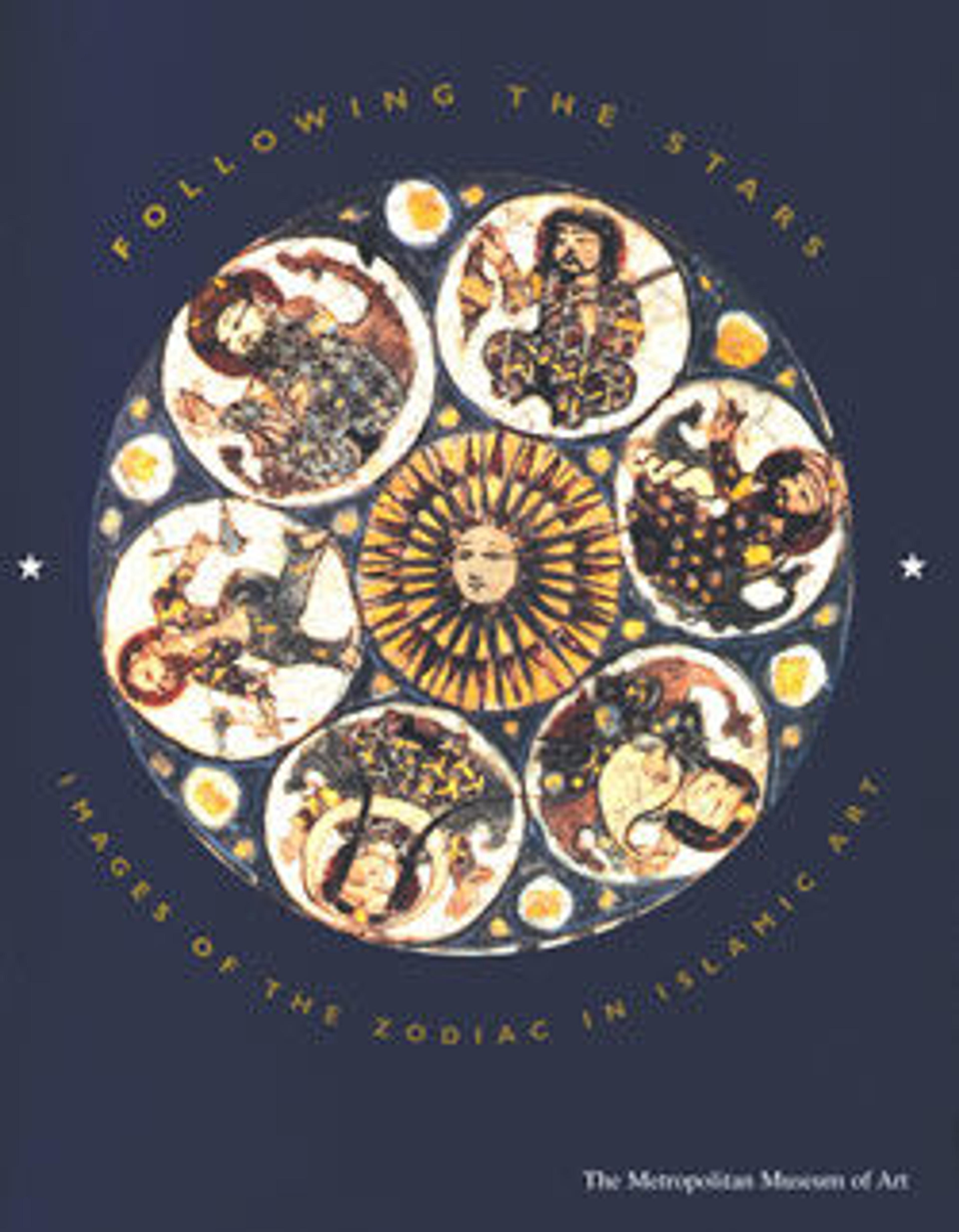Inkwell with Twelve Zodiac Medallions
The twelve signs of the zodiac are arranged around the surface of the vessel in groups of four, each surrounding a central medallion with a horsemen or a falconer.
Virgo (al-sunbula, "ear of corn") is the only sign of the Zodiac whose iconography is very different from that of Western cycles. For some reason, while the name of the constellation is al-cadhra ("the virgin") and it is depicted in astronomical treatises as a female figure, the name of the corresponding sign of the Zodiac was sunbula, after the brightest star of the constellation. Therefore, in representations on objects, the image of the female virgin was replaced by a male figure, evidently Gemini's Planetary Lord Mercury, who was shown as a farmer slashing ears of corn with a crescent-shaped scythe.
Virgo (al-sunbula, "ear of corn") is the only sign of the Zodiac whose iconography is very different from that of Western cycles. For some reason, while the name of the constellation is al-cadhra ("the virgin") and it is depicted in astronomical treatises as a female figure, the name of the corresponding sign of the Zodiac was sunbula, after the brightest star of the constellation. Therefore, in representations on objects, the image of the female virgin was replaced by a male figure, evidently Gemini's Planetary Lord Mercury, who was shown as a farmer slashing ears of corn with a crescent-shaped scythe.
Artwork Details
- Title:Inkwell with Twelve Zodiac Medallions
- Date:late 12th–early 13th century
- Geography:Attributed to Iran
- Medium:Brass; cast, inlaid with silver and copper
- Dimensions:H. 2 3/8 in. (6 cm)
Diam. 3 1/4 in. (8.3 cm) - Classification:Metal
- Credit Line:Rogers Fund, 1944
- Object Number:44.131
- Curatorial Department: Islamic Art
More Artwork
Research Resources
The Met provides unparalleled resources for research and welcomes an international community of students and scholars. The Met's Open Access API is where creators and researchers can connect to the The Met collection. Open Access data and public domain images are available for unrestricted commercial and noncommercial use without permission or fee.
To request images under copyright and other restrictions, please use this Image Request form.
Feedback
We continue to research and examine historical and cultural context for objects in The Met collection. If you have comments or questions about this object record, please contact us using the form below. The Museum looks forward to receiving your comments.
